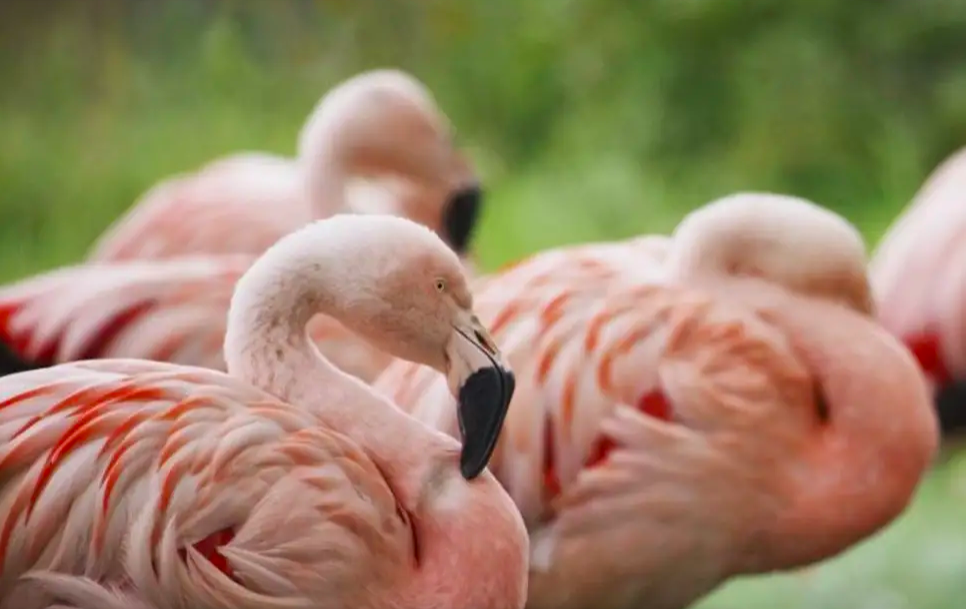Alarm raised as water levels in Kenya’s Rift Valley lakes rise, submerging tourism facilities
Famous flamingos leave Lake Nakuru for Lake Baringo as rising water changes alkalinity

Your support helps us to tell the story
From reproductive rights to climate change to Big Tech, The Independent is on the ground when the story is developing. Whether it's investigating the financials of Elon Musk's pro-Trump PAC or producing our latest documentary, 'The A Word', which shines a light on the American women fighting for reproductive rights, we know how important it is to parse out the facts from the messaging.
At such a critical moment in US history, we need reporters on the ground. Your donation allows us to keep sending journalists to speak to both sides of the story.
The Independent is trusted by Americans across the entire political spectrum. And unlike many other quality news outlets, we choose not to lock Americans out of our reporting and analysis with paywalls. We believe quality journalism should be available to everyone, paid for by those who can afford it.
Your support makes all the difference.By Caroline Chebet for The Standard in Kenya
Five lakes in Kenya’s Great Rift Valley have swollen to the highest records in recent years, according to a conservationist.
The water levels in lakes Baringo, Bogoria, Nakuru, Naivasha and Elementatita have in the past two months increased, recording levels superseding the 2012-2013 records, when the lakes experienced a major increase.
Lake Nakuru National Park Senior Warden Catherine Wambani said over the past two months, water in Lake Nakuru, 100 miles northwest of the capital, Nairobi, has been rising at a high rate, submerging some old buildings that had been abandoned in 2013, when the lake swelled.
“The water levels had significantly dropped after the 2013 increase. Water has since increased, submerging some of the buildings,” Ms Wambani said.
She added that although no research had been conducted to establish the exact levels, the increase might be attributed to geographical activities linked to the Rift Valley as well as the ongoing rains and catchment distraction, especially in the nearby Mau Forest.
“Currently, there is no research going on despite the phenomenon being witnessed in all the Rift Valley lakes. Resurgence of the same challenges experienced almost six years ago seems to be back, this time at higher rates,” Wambani said.
She said the phenomenon has been witnessed in lakes Naivasha and Elementaita, where high levels of water had been recorded.
Lake Bogoria Senior Warden James Kimaru said the rising water levels might soon submerge a new gate that was built after the previous one was covered in 2014.
“We constructed a gate and administration facilities at a cost of GBP92,000 between 2016 and 2017. Unfortunately, if the water levels continue rising at this rate, we might end up losing the gate again,” Mr Kimaru said.
The water levels in lakes Baringo and Bogoria, he said, were at their highest.
“The rate at which the water is rising in Baringo and Bogoria is really fast. Coupled with the ongoing rains and warnings of rains above normal to be experienced in the coming months, the levels might drastically increase, submerging notable facilities,” he said.
Loboi dispensary, located next to Lake Bogoria National Reserve, is submerged.
However, Kimaru said the increase in water levels would not affect flamingo populations in the lake.
“The lake is deeper and changes may be very minimal in terms of alkalinity. The flamingoes will still thrive,” he said, adding that emergency plans have been and alerts would be sent to daily.
In Lake Nakuru, the increase in the water volume has led to decrease in alkalinity, thus affecting the flamingos.
The surging water levels years ago saw one of the greatest migration of flamingos from Lake Nakuru to Bogoria. Few flamingoes can be spotted now.
Nakuru Governor Lee Kinyanjui asked researchers to step in and give reports to guide future planning. “The roads to the lakes and parks are almost inaccessible,” said Mr Kinyanjui.

This article is reproduced here as part of the Giants Club African Conservation Journalism Fellowships, a programme of the charity Space for Giants and supported by the owner of ESI Media, which includes independent.co.uk. It aims to expand the reach of conservation and environmental journalism in Africa, and bring more African voices into the international conservation debate. Read the original story here.
Join our commenting forum
Join thought-provoking conversations, follow other Independent readers and see their replies
Comments